Hans Volker Klapdor-kleingrothaus, Geraint F. Lewis9789812814340, 981-281-434-5
Table of contents :
CONTENTS……Page 10
Preface……Page 6
Direct and Indirect Search for Cold Dark Matter……Page 24
Results and Developments with Large Mass Highly Radiopure NaI(Tl) at LNGS R. Bernabei, P. Belli, F. Montecchia et al…….Page 26
1. The DAMA/NaI experiment……Page 27
2. The DAMA/NaI model-independent result……Page 28
3.1. Some corollary quests for WIMP class candidates……Page 30
3.2. Possible implications of the channeling e ect in NaI(Tl) crystals……Page 33
3.3. Results for light bosonic candidates……Page 35
3.4. … and more……Page 36
4. Some comparisons in the field……Page 37
5. The new DAMA/LIBRA and beyond……Page 38
References……Page 39
1. Introduction……Page 41
2. The DMA Interpretation of the EGRET Excess of Diffuse Galactic Gamma Rays……Page 44
3. The Antiproton Flux from DMA in an Isotropic Propagation Model……Page 48
4. The Antiproton Flux from DMA in an Anisotropic Propagation Model……Page 51
5. Positron Annihilation in Our Galaxy……Page 56
6. Constraints from Direct Dark Matter Search Experiments……Page 57
7. Conclusion……Page 59
References……Page 60
Density Wave Theory Applied to the Spiral Arms in the Milky Way Predicts a Massive Outer Galactic Disk B. Fuchs……Page 63
References……Page 64
New Constraints on Spin-Dependent WIMP-Neutron Interactions from HDMS with Natural Ge and 73Ge H.V. Klapdor-Kleingrothaus, I.V. Krivosheina and V.A. Bednyakov……Page 65
References……Page 72
1. Introduction……Page 74
3.2. Neutrino oscillations……Page 75
4. Neutrino Production……Page 76
5. Conclusions……Page 79
Acknowledgments……Page 80
References……Page 81
1. Introduction……Page 83
2. Low-Energy Sensitivity of Two-Phase Xenon Detectors……Page 85
3. Electron-Nuclear Recoil Discrimination in ZEPLIN-III……Page 86
4. Present Status of the Experiment……Page 87
References……Page 89
1. Introduction……Page 90
2. CDMS Experiment……Page 91
3. Backgrounds……Page 92
4. Data Analysis……Page 94
5. SuperCDMS……Page 96
References……Page 97
1. Introduction……Page 98
2. Key Idea of the Project……Page 100
3. R&D Study by the Prototype Detector……Page 102
4. The 800 kg Detector……Page 105
5. Conclusion……Page 108
References……Page 109
Dreams and Reality of Using Naked Ge Detectors in Liquid Nitrogen, Status (Long-Term Stability) of GENIUS-TF I.V. Krivosheina and H.V. Klapdor-Kleingrothaus……Page 110
1. Introduction……Page 111
2. The GENIUS-TF-II and III Setups……Page 112
3.2. Long-Term Stability……Page 114
5. Conclusions……Page 115
References……Page 116
1. Introduction……Page 118
2. Detection Principle and Conceptual Design……Page 119
3. Expected Background……Page 123
4. Outlook……Page 125
References……Page 126
1. Introduction……Page 127
2. SRIM……Page 128
3. TRIM Simulation and Results Analysis……Page 129
3.1. Ion Ranges……Page 130
3.2. Head-Tail……Page 132
References……Page 135
1. Introduction……Page 136
2.1. CaF2 scintillator complex and ELEGANT VI system……Page 137
2.2. System reorganization……Page 138
2.3. Flash scaler and low energy signal……Page 140
3. Analysis……Page 141
4. Preliminary Result……Page 143
References……Page 144
1. Introduction……Page 145
2. The AMANDA and IceCube Detectors……Page 146
3. Signal and Background Simulations……Page 147
4. To Catch a Neutralino from the Sun……Page 148
5. To Catch a Neutralino from the Earth……Page 149
6. Expected Sensitivity for IceCube-22 Combined with AMANDA……Page 151
7. Expected Sensitivity for IceCube-80……Page 152
8. Summary and Outlook……Page 153
References……Page 154
1. Introduction……Page 155
2. GLAST Satellite……Page 156
3. Dark Matter Searches……Page 157
3.2. Milky Way Halo……Page 159
3.3. Satellites and Subhalos……Page 160
3.4. Spectral Lines……Page 161
4. Conclusions……Page 162
References……Page 163
1. Introduction……Page 165
3. Analysis and Bright Star Sample……Page 166
3.1. The Bright-Star Sample……Page 167
3.3. The Status of Published Magellanic Microlensing Candidates……Page 168
4. Result on Low Machos Mass (M < 15M )……Page 169
5. Preliminary Result on Higher Macho Mass (5 to 200 M )……Page 171
References……Page 172
1. Introduction……Page 173
2. General Bounds on Dark Matter Annihilation……Page 174
3. Dark Matter Annihilation and Galactic Positrons……Page 175
References……Page 177
1. Introduction……Page 178
2. Dark Matter Substructure……Page 179
4. Ray-Tracing……Page 180
5. Microlensing Demagni cation……Page 181
6. But How Smooth is Smooth?……Page 183
7. Source Size Dependence……Page 184
8. So What’s Next?……Page 186
References……Page 187
SUSY/SUGRA Phenomenology in Dark Matter, New Symmetries……Page 189
1. Introduction……Page 190
2. Framework and Notation……Page 191
3. Low Energy Leptonic Physics……Page 193
4. Leptogenesis……Page 195
5. Implications from Zero Neutrino Yukawa Textures……Page 197
References……Page 200
1. The Dark Energy Enigma……Page 204
2. Ubiquitous Finetuning Problem and Two-Step Strategy……Page 206
3. Dark Energy and Supergravity……Page 208
4. Heterotic vs Type IIB String-Theory……Page 209
5. Vacuum Energy after Supersymmetry Breaking in Heterotic String Compactifications……Page 210
6.1. Flux Compactification Geometry……Page 212
6.2. Supersymmetry Breaking and Zero Vacuum Energy……Page 214
7. Dark Energy from Higher Order Corrections……Page 216
8. Summary……Page 217
References……Page 218
1. Introduction: Dark Matter and Its Darkness……Page 221
2. Two New Quantum Fields……Page 222
3. A Pause……Page 227
5. Towards a Standard Model With Erebus and Nyx Fields……Page 228
6. Concluding Remarks……Page 229
References……Page 230
1. Transformation of Original Spin 1/2 Fields Yields Standard Supersymmetry……Page 232
2. Time is Defined by Progression of 3-Geometries in External Space……Page 234
3. Transformation of 3-Dimensional “Path Integral” Changes Euclidean Factor e……Page 235
4. Outline of Broad Program: From a Planck-Scale Statistical Theory to Standard Physics with Supersymmetry……Page 238
References……Page 239
1. Introduction……Page 240
2. Mass Matrices From Approach Unifying Spins and Charges……Page 245
3. Dark Matter Candidates……Page 247
4. Concluding Remarks……Page 248
References……Page 250
1. Introduction……Page 251
2. Accelerating Universes and String-Inspired Models……Page 252
3. Modified Gauss-Bonnet Theory……Page 254
4. Cosmological Perturbations and Stability Conditions……Page 255
6.1. Absence of Scalar Potential……Page 256
7.1. Minimally Coupled Scalar Field……Page 257
7.2. Non-Minimally Coupled Scalar Field……Page 258
8. Late Time Cosmology……Page 259
9. Time-Variation of Fundamental Constants……Page 261
10. Further Constraints……Page 262
11. Conclusions……Page 263
References……Page 264
Structure Formation and Gamma-Ray Sources……Page 267
1. Introduction……Page 268
2. COSMOS: The Cosmic Evolution Survey……Page 269
2.1. Galaxy catalogue……Page 270
3. The Galaxy-Cluster Cross-Correlation Function……Page 271
4. Results……Page 273
5. Discussion and Conclusions……Page 274
References……Page 276
1. Introduction……Page 277
2. The Bullet Cluster 1E0657-56……Page 278
3. Dark Matter Properties……Page 279
4. What Did We Learn……Page 281
References……Page 282
Cosmological Weak Lensing and Dark Matter Mapping with the Hubble Space Telescope T. Schrabback, P. Simon, T. Erben et al…….Page 283
1. Introduction……Page 284
2. Practical Concerns for Measuring Weak Lensing with ACS……Page 286
3. Cosmological Weak Lensing Analysis of the ACS Archive……Page 288
3.2. GEMS/GOODS……Page 289
3.3. COSMOS……Page 291
4. Conclusions……Page 293
References……Page 294
1. Introduction……Page 297
2. Modification of the QT Stability Index……Page 298
3. Discussion and Conclusions……Page 302
Acknowledgments……Page 303
References……Page 304
1. Introduction……Page 306
2. Theory……Page 307
3. Discussion and Conclusion……Page 310
Acknowledgments……Page 311
References……Page 312
Dark Matter Halo Profiles in Scale-Free Cosmologies S.R. Knollmann, C. Power and A. Knebe……Page 313
1. Introduction……Page 314
2.1. Starting and Stopping……Page 315
2.2. Performed Simulations and Halo Selection……Page 316
3.1. Inner Profile Slope……Page 317
3.2. The Maximum Slope……Page 318
4. Conclusions……Page 319
References……Page 320
1. Introduction……Page 322
2. Primordial Magnetic Field……Page 323
3. Results and Discussions……Page 324
References……Page 326
Reissner–Nordstr om Expansion E.M. Prodanov, R.I. Ivanov and V.G. Gueorguiev……Page 327
References……Page 331
1. Introduction……Page 333
3. Assumptions……Page 334
4. Simple Modelling of the Extended Source……Page 336
5. “Nonparametric” Lens Modelling……Page 338
References……Page 339
1. Introduction……Page 340
2. Sample Selection and Observations……Page 341
3. Analysis and Results……Page 342
4. Fossils in the Millennium Simulations……Page 343
4.1. Dark Matter Simulation……Page 344
4.3. Gas Simulations……Page 345
5. Results from the Simulations……Page 346
6. Conclusions……Page 347
References……Page 348
1. Introduction……Page 350
2. Truncated Dark Matter Models……Page 352
2.1. Dark Matter Halo Abundance and Spatial Clustering……Page 353
2.3. The Growth of Halo Angular Momentum and Spin……Page 356
References……Page 361
1. Introduction……Page 363
1.1. The INTEGRAL Space Telescope……Page 364
1.2. -Ray Sources……Page 365
2. Galactic Surveys & IGR Sources……Page 366
4. Very High-Energy Sources……Page 369
5. Extragalactic Sources……Page 370
6. Positron Annihilation……Page 371
7. Nucleosynthesis……Page 372
9. A Synthetic View of -Ray Sources……Page 373
10. Outlook……Page 375
References……Page 376
Dark Matter and Dark Energy……Page 379
1. Introduction……Page 380
2. Dark Energy and Cosmic Structure……Page 381
3. Simulation Details……Page 383
4. Results……Page 384
5. Evolving Dark Energy and Structure Growth……Page 385
6. Conclusion……Page 387
References……Page 388
General Relativity (Plus Dark Matter and Dark Energy) or Alternative Theories of Gravity A.F. Zakharov, V.N. Pervushin, F. De Paolis et al…….Page 389
2. CMB anisotropy studies, Relikt-1 & COBE……Page 390
3. Precise cosmology & Conformal Cosmological Models……Page 394
3.1. Magnitude-Redshift Relation……Page 397
4. Standard cosmology vs. f(R) gravity……Page 399
4.1. Planetary Constraints……Page 401
4.2. Discussion……Page 403
References……Page 404
Galaxy Clusters, Low Mass Stellar Evolution……Page 408
Low Mass Stellar Evolution with WIMP Capture and Annihilation P.C. Scott, J. Edsj o and M. Fairbairn……Page 410
References……Page 414
1. Introduction……Page 416
2. The Modified Dynamics in Galaxy Clusters……Page 418
3. The Bullet Cluster 1E0657-56……Page 419
4. The Ring in Cl0024+17……Page 420
5. Low Temperature X-Ray Emitting Groups……Page 422
References……Page 423
Massive Black Holes……Page 426
The Dark Mass at the Center of the Milky Way: NIR and X-Ray Flare Emission from SGR A A. Eckart, L. Meyer, M. Zamaninasab et al…….Page 428
1. Introduction……Page 429
2. Observations and Data Reduction……Page 430
2.1. Comparison of the NIR/X-ray are events……Page 431
3.1. Relativistic disk modeling of the variable are emission……Page 432
3.2.1. The SSC disk model……Page 433
3.2.2. Results of the modeling……Page 434
5. Summary and Conclusion……Page 436
References……Page 440
1. Introduction……Page 442
2. Physics and Cosmology of Sterile Neutrinos……Page 444
3. The Symbiotic Black Hole Formation Scenario……Page 447
4. Accretion of a Neutrino Halo into a Black Hole……Page 449
5. Conclusions……Page 453
References……Page 454
Search for Hot and Warm Dark Matter……Page 457
1. Introduction……Page 458
2. The Physics Potential of the KATRIN Experiment……Page 459
3. Final Remarks……Page 463
References……Page 464
1. Introduction……Page 465
2.2. Zero Range Library……Page 467
3. Analysis of the HEIDELBERG-MOSCOW Experiment with Neuronal Net and Calculated Libraries……Page 468
4. Conclusion……Page 485
References……Page 488
1. Introduction……Page 491
2. Identification of -Lines in the Background Spectrum……Page 493
3. Spectral Region of 2000–2060 keV……Page 500
4. Conclusion……Page 503
References……Page 504
1. Neutrino Masses and the Emergence of Sterile Neutrinos……Page 505
2. Dark Matter in the Form of Sterile Neutrinos……Page 507
3. X-ray Detection of Relic Sterile Neutrinos……Page 508
4. X-rays and the Formation of the First Stars……Page 509
4.1.1. The Pulsar Kicks……Page 510
References……Page 511
1. Introduction……Page 514
2.1.1. Some technical features……Page 517
3. Water Cherenkov Detectors……Page 520
4.1. Some Important Parameters of the Neutrino Signal……Page 521
4.2. Problems……Page 522
4.4. Time Profile of the Neutrino Signal……Page 525
5. Main Parameters of the Neutrino Signal from SN 1987A……Page 529
References……Page 531
1. Neutrino Effect on the CMB……Page 533
3. Result and Discussion……Page 534
References……Page 536
Axion and Axino, Exotics……Page 538
1. Introduction……Page 540
2. Axions……Page 542
3. Axions from Superstring……Page 544
4. Axions from Stars……Page 546
5. Axions in the Universe……Page 547
6. Axinos as CDM……Page 548
References……Page 551
Neutrino Dark Energy, Dominance and Resolution of the Fifth Force Problem E.I. Guendelman and A.B. Kaganovich……Page 554
References……Page 558
1. Introduction……Page 559
2. Experiment Setup……Page 561
3. Data Collection……Page 563
4. Results……Page 564
References……Page 566
Negatively-Charged Massive Particles as Progenitors for CDM, and Solution to the 6Li and 7Li Problem in Big Bang Nucleosynthesis M. Kusakabe, T. Kajino, R.N. Boyd et al…….Page 567
1. Introduction……Page 568
3. Result……Page 569
4. Summary……Page 570
References……Page 571
1. Planckian DM objects and possibility of their detetion……Page 572
2. The history of the daemon discovery……Page 574
2.1. Observation of NEACHO daemons in St. Petersburg……Page 575
2.2. Underground experiments in Baksan with a daemon-sensitive PM tube……Page 577
3. NEACHO & GESCO daemons and the Troitsk anomaly in 3T -spectrum……Page 578
4. SEECHO daemons and the DAMA/NaI experiment……Page 579
5. Attempts to reveal the daemon-stimulated proton decay……Page 580
6. Concluding remarks and future prospects……Page 581
References……Page 583
Cosmological Variations and Fundamental Constants……Page 586
1. Introduction……Page 588
2. The Universe We Observe……Page 590
2.1. The Sandage–de Vaucouleurs Paradox……Page 591
3. Averaging, Backreaction and Dark Energy: The Debate……Page 592
4. Finite Infinity and Gravitational Energy……Page 595
5. Finite Infinity and the True Critical Density……Page 597
6. Average Homogeneity in a Lumpy Universe……Page 600
7. The Fractal Bubble Model……Page 602
8. Observational Tests……Page 606
8.1. Resolving the Lithium Abundance Anomaly……Page 609
8.2. Spatial Curvature and the Ellipticity Anomaly……Page 610
8.4. The Expansion Age……Page 611
8.5. The Hubble Bubble……Page 612
8.6. Prospects for Future Cosmological Tests……Page 614
9. Conclusion……Page 615
References……Page 617
Underground Laboratories……Page 621
2. Future Science Demand, Space and Availability……Page 622
3. Demand for Upgrade of Laboratory Facilities……Page 624
4. Very Large Scale Caverns in Europe……Page 626
5. Conclusion and Inter-Laboratory Cooperation and Management……Page 627
References……Page 628
1. Introduction……Page 629
2. Description……Page 630
3. Status of the Facility……Page 633
5. Conclusions……Page 635
List of Participants……Page 638
Author Index……Page 652
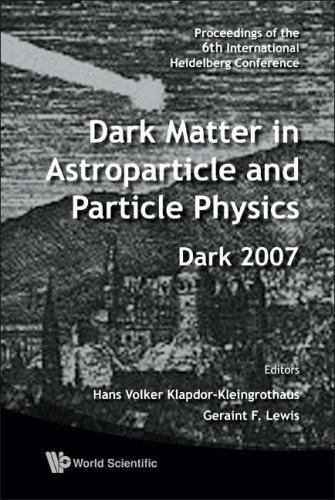
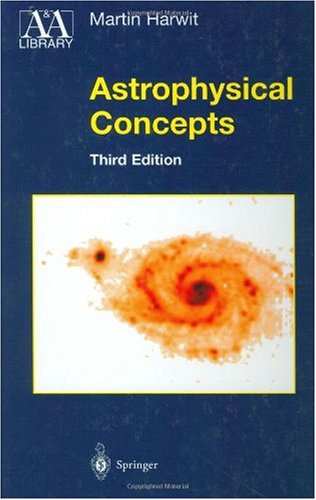
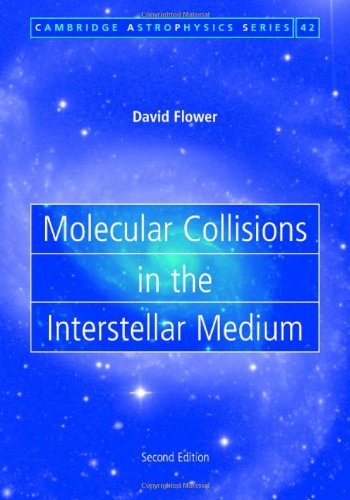

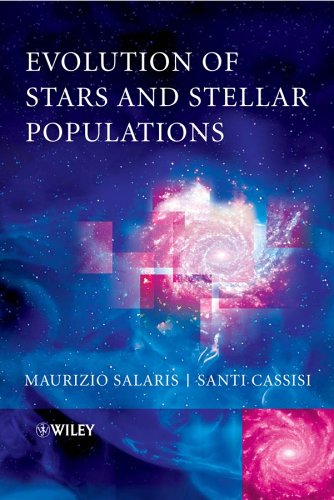
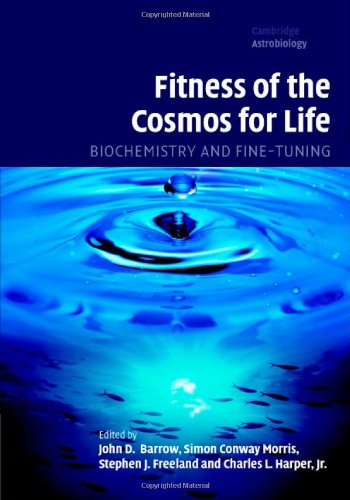
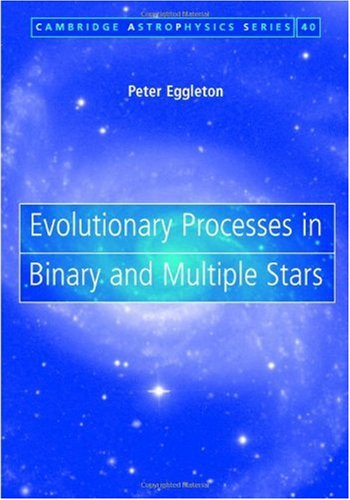
Reviews
There are no reviews yet.